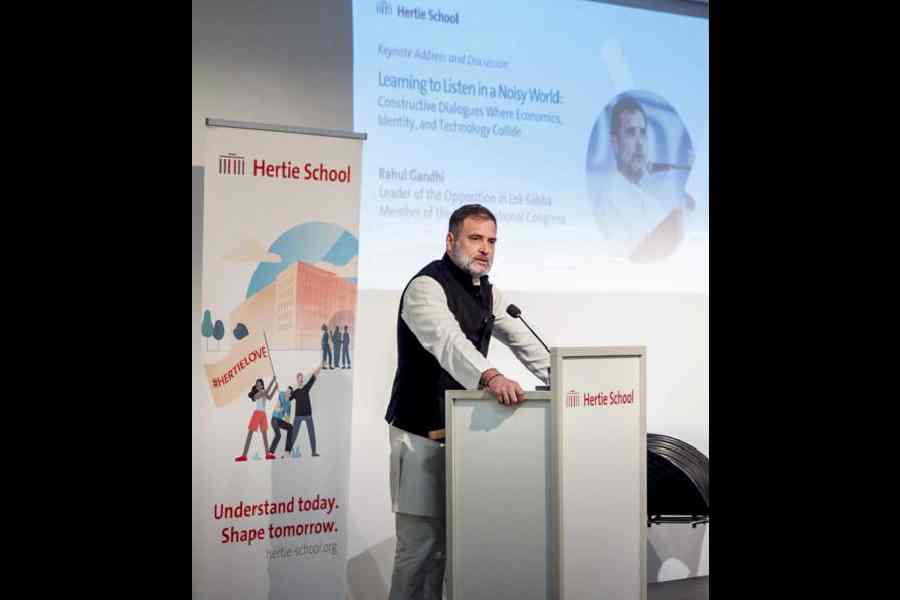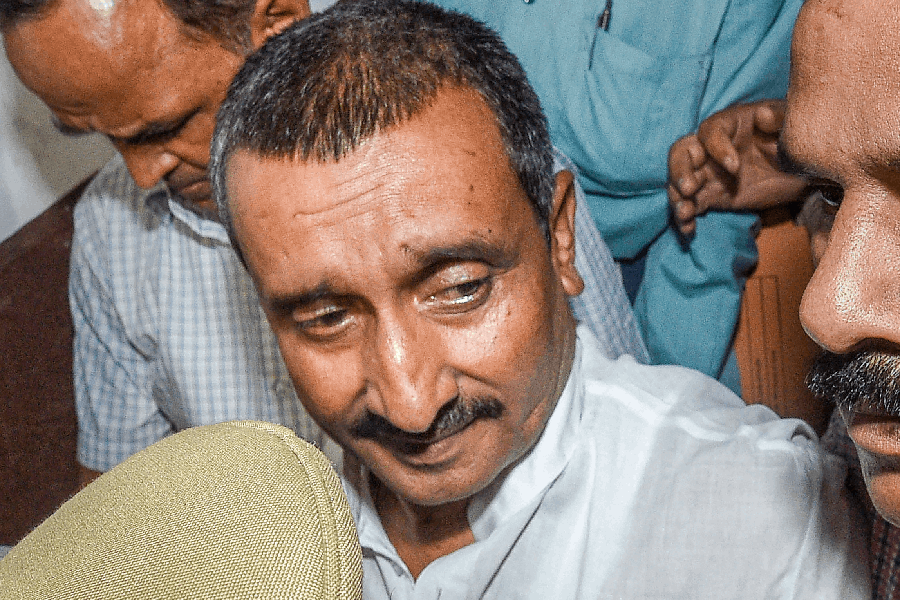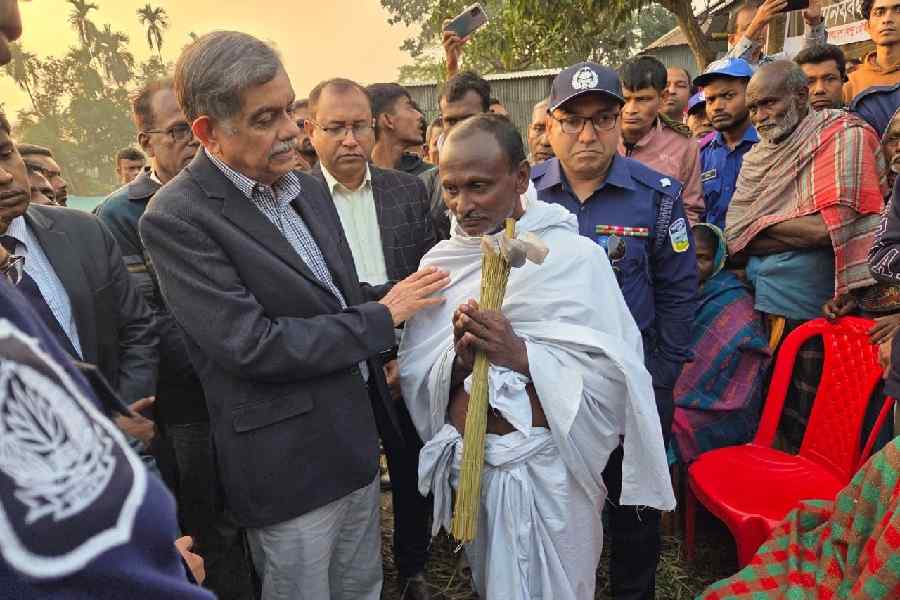 |
| Fitness consultant Raghav Pande’s videos received recognition when he was awarded $10,000 as part of YouTube’s Next Up programme. Pix: Jagan Negi |
What does chef Sanjay Thumma have in common with the runaway hit song Kolaveri Di? Thumma definitely hasn’t put mouth to microphone and turned out any Tamil-English mega-hits. But he’s a star in his own right on YouTube. Every week he turns up the heat in the kitchen and puts out three new videos on the video-sharing website that are watched by lakhs of aspiring super-chefs.
Shraddha Sharma’s life has changed dramatically in the last nine months. The 16-year-old schoolgirl from Dehradun has performed at the Delhi IIT Fest and she is currently inundated by offers to sing on various TV programmes. Her sudden jump to stardom came after she sang a sad ballad to a friend who she was breaking up with and recorded it on her iPhone. The amateur recording became a runaway YouTube hit and now Shraddha’s videos are getting huge numbers of hits every day. She even finds it difficult to go shopping in her hometown as she’s a celebrity of sorts and is constantly being stopped by people in the street. “Whenever I go out, people stop me and make me sing songs,” she says. “My parents have put restrictions on me now.”
 |
 |
| Abhigyan Jha now plans to make his popular Hindi online show, Jai Hind TV, in Tamil, Marathi, Gujarati and English; (above) Saameer Mody’s online distribution platform has put out thousands of short films, documentaries, animated content and films by students |
The awesome power of YouTube to turn almost anybody into a mega-star has been strikingly obvious ever since Kolaveri Di became the tune of the moment from Kashmir to Kanyakumari. But Tamil actor Dhanush isn’t the only one who has been turned into a mega-star overnight after showing off his skills on YouTube. The fact is that YouTube can make almost anyone a star. There are fitness consultants and chefs and even aspiring musicians-cum-comedians with bizarre acts like Wilbur Sargunaraj who’ve caught the attention of audiences around the world.
Take a look at fitness consultant Raghav Pande, who has tapped a big market by focusing primarily on an out-of-shape, overweight office-going clientele. In addition, he has been attracting more clients by uploading five- to seven-minute clips on YouTube where he demonstrates a series of exercises. He has published about 30 videos so far and plans to continue doing them. Says Pande: “The idea was to teach people how to stay healthy without going to the gym. So, I included simple exercises like the shoulder press and push-ups. And I explain everything in a chatty style.”
In November, Pande’s videos received recognition when he was awarded $10,000 as part of YouTube’s Next Up programme. He was declared the Next Up Trainer after YouTube sifted through thousands of videos on its site.
Pande certainly attempts to liven up his videos in unusual ways. His most popular one is called Body Transformation in 60 Days and he starts by showing himself gorging on junk food to put on weight. Then, he demonstrates a 60-day exercise programme to get back in shape. “It was an instant hit,” says Pande. “I have around 60,000 views on that and it still remains my most popular video till now.”
Similarly, Veena Nair triumphed against a strong field when she won the $10,000 prize as the Next Up Chef. That was quite an achievement for Nair who started out as a complete novice in the kitchen two years ago and has now written two cookbooks and turned into a screen star whose particular field of expertise is chutneys.
Nair looks back almost with amazement at her own naiveté when she started out. She wasn’t an expert in the kitchen so she consulted an aunt who was. As the aunt went about cooking dishes Nair had a camera running. “I recorded it all and posted it on YouTube. That was my first video and it was shaky and quite horrible,” she admits cheerfully.
 |
| Manit Dani, 22, gives online guitar lessons and is attracting a strong following |
Both Nair and Pande won equipment worth $5,000 each from the Next Up programme.
Turning all this into a paying proposition is the big step forward for all these unknowns who’ve been propelled into web stardom. The money can come in different ways. For instance, Thumma gets a huge number of hits both on YouTube and his website and he’s getting ads on both. At a slightly different level, by going on YouTube, Pande has tapped a wider base of clients around the world. He says that his business has grown five-fold in the last one year. “People leave comments on my videos and I contact them as soon as possible and they become my clients. There are people from places like the US, India, Dubai and even Brazil,” he says.
Or, look at Manit Dani an aspiring musician and guitar teacher. So far he has only made small amounts from his videos but the money is starting to trickle in slowly and steadily. The 22-year-old has more than 5,000 subscribers (followers) and has made over 200 short videos on YouTube explaining how to play different songs.
Dani, who’s an engineering student from Panchkula, has composed five songs so far and has released one of them digitally. More importantly, he plays the role of online guitar tutor for the YouTube masses.
“When I was a beginner I always looked for online tutorials for help as I didn’t have time for a personal tutor. Somehow I practiced all these years and finally started making online tutorials for beginners and intermediate players,” he says.
 |
| For M.R. Hari, the results of switching to YouTube from his own website were beyond his wildest expectations |
There are others too who’ve raked in large amounts of money even if they haven’t faced the cameras themselves. Take M.R. Hari of Invis Multimedia, who started making videos for Kerala Tourism back in 1998. “I also made videos on everything from yoga to street magicians, Ayurveda, and herbal medicines,” says Hari.
Besides that, he began making DVDs in 2003 about Indian dance forms. Finally he had so much material that he put it all onto a website of his own — but got very few hits.
Then, in 2009 someone suggested he put all his content on YouTube. The results were way beyond his wildest dreams. “Today, I get 1.5 million hits a month and earn around Rs 4 lakh-Rs 5 lakh a month,” says Hari. That’s not all. He’s also saving about Rs 12 lakh a year by using YouTube as host server.
On a similar note, in 2005, 40-year-old Saameer Mody, along with two friends, started 1takemedia.com to provide opportunities within the Indian film and TV industries. A few years later, using YouTube, they also turned it into a distribution platform for short films and documentaries. Now they have a library of about 2,000 videos (ranging from one minute to 70 minutes long) that get about 60,000 views a day.
Says Mody: “We’re now in the Top 50 YouTube Partner channels in India and our profits run into five figures a month.”
Other savvy entrepreneurs are also using YouTube to drive profitable businesses. Click onto YoBoHo, which makes short videos on a variety of subjects. “Our content ranges from Bollywood gossip to news from Hollywood to nursery rhymes and fables for kids. The rhymes alone bring nearly 50,000 views a day,” says Hitendra Merchant, the founder and CEO of YoBoHo, who worked in the music industry earlier.
After struggling for the first few months YoBoHo now gets 600 million views across its 30 YouTube channels. And it’s raking in about $120,000 dollars a month, according to Merchant.
Another YouTube entrepreneur Abhigyan Jha, who earned his spurs as a writer of TV soaps, started his full-format TV show on the Internet two years ago. Now Jai Hind TV is a 20-minute entertainment show with stand- up routines. “People spend more time on the Internet than in front of the television. So I thought why not explore the medium,” says Jha.
Jha started out by uploading the programme on the Net. “We started facing technical problems so we decided to put out our videos on YouTube as back-up,” says Jha.
The results were astonishing. Within 15 days it got over 1,00,000 hits. So, as soon as his contract with another company expired, Jha became a YouTube Partner.
Jai Hind recently completed 225 episodes and Jha now plans to make it in Tamil, Marathi and Gujarati. And he’s also making an English version called BLTN (Better Late Than Never). “Our show is watched by people in Uganda, USA etc. Even the English version has received offers from Germany, Singapore for syndication,” says Jha.
How do you turns thousands or even millions of hits into a revenue earning proposition? That’s the $64 million question on the Net. It works differently for each of these players. Pande, for instance, uses his fitness videos to attract new customers. And Shraddha is turning her Internet stardom into offers to perform on television and at live shows.
But YouTube is also helping these individuals and companies turn their sites into paying propositions with its YouTube Partner Program, which has just been launched in India in September. Under this, YouTube offers a split on the ad revenue generated and also helps content developers in other ways. For instance, partners can live stream and broadcast content in real-time. YouTube had already struck partner deals with YoBoHo and Jai Hind TV in 2010 even before bringing the programme to India.
“We chose India for our investments after looking at the vibrancy this market has in terms of content generation. Another primary reason to come to India is because of the potential growth of online advertising,” says David MacDonald, head of YouTube Content Operations (Asia Pacific).
Of course, there are all types of people who’ve found fame of sorts on YouTube. Take Wilbur Sargunaraj. He sings peppy songs with wacky lyrics — his top winners include songs like Mummy daddy, I want love marriage and Chicken 65. The former is said to have received 5,00,000 hits.
Sargunaraj, who was born and brought up in Madurai, calls his genre of music Indo-world fusion and has performed at several venues around the world. In his videos, the singer always dresses formally and there is a comic element in the performance. He has made 30 music videos and also several ‘instructional’ ones like one in which he teaches people how to use an Indian toilet. “I think people like my lively personality and creativity,” says Sargunaraj cheerfully. “They want something different and I give it to them.”
And that is perhaps the golden rule on YouTube. Nobody really knows what makes a winner and what doesn’t. But it’s crucial to offer a video with a difference that will go viral and reach out to the world.










